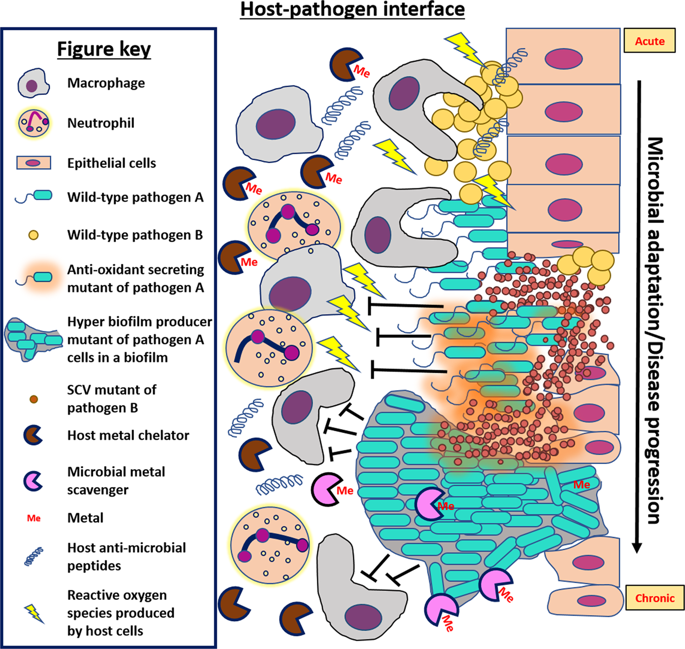npj Biofilms and Microbiomes ( IF 9.2 ) Pub Date : 2019-06-07 , DOI: 10.1038/s41522-019-0089-2 Jiwasmika Baishya , Catherine A. Wakeman

|
Chronic infections often contain complex mixtures of pathogenic and commensal microorganisms ranging from aerobic and anaerobic bacteria to fungi and viruses. The microbial communities present in infected tissues are not passively co-existing but rather actively interacting with each other via a spectrum of competitive and/or cooperative mechanisms. Competition versus cooperation in these microbial interactions can be driven by both the composition of the microbial community as well as the presence of host defense strategies. These interactions are typically mediated via the production of secreted molecules. In this review, we will explore the possibility that microorganisms competing for nutrients at the host–pathogen interface can evolve seemingly cooperative mechanisms by controlling the production of subsets of secreted virulence factors. We will also address interspecies versus intraspecies utilization of community resources and discuss the impact that this phenomenon might have on co-evolution at the host–pathogen interface.
中文翻译:

慢性感染过程中的选择性压力推动了微生物的竞争与合作。
慢性感染通常包含病原微生物和共生微生物的复杂混合物,从需氧和厌氧细菌到真菌和病毒。存在于被感染组织中的微生物群落不是被动地共存,而是通过一系列竞争和/或合作机制彼此主动相互作用。这些微生物相互作用中的竞争与合作可以由微生物群落的组成以及宿主防御策略的存在来驱动。这些相互作用通常通过分泌分子的产生来介导。在这篇综述中,我们将探讨在宿主-病原体界面上争夺养分的微生物通过控制分泌的毒力因子子集产生看似合作机制的可能性。


























 京公网安备 11010802027423号
京公网安备 11010802027423号